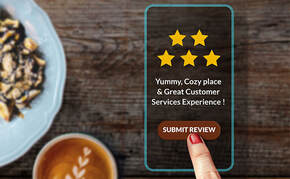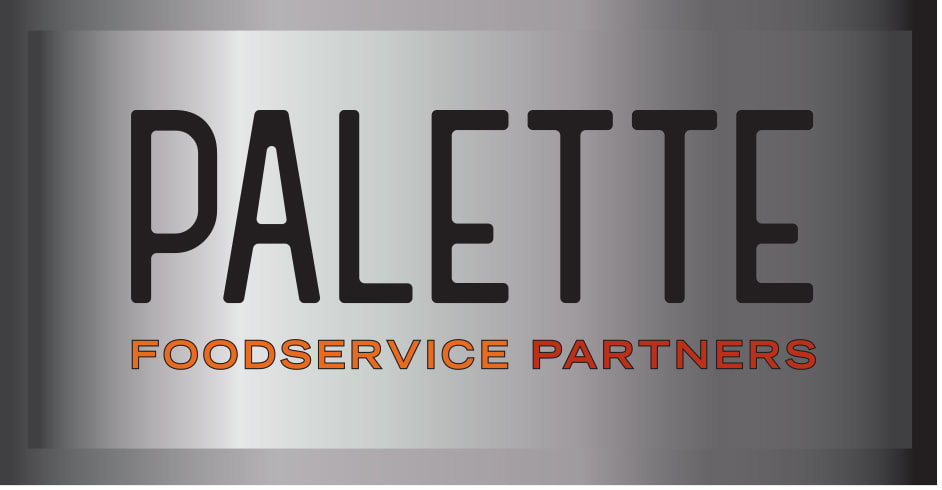 Even the most appealing restaurant setting will only go so far if it doesn’t attract attention on Google. Research from Pymnts.com found that not only do 56 percent of consumers say they have used Google recently to search for restaurant information, but 51 percent of them also consider Google to be the most useful platform for finding restaurant information. You can optimize your performance on Google by taking actions on a weekly basis to keep your business information up to date: A recent Modern Restaurant Management report advises keeping business hours and online menus current, providing a prompt and genuine response to reviews, and posting new photos and other content much like you would post about your restaurant on social media. Don’t miss an opportunity to ask a guest for a review – they are big drivers of SEO ranking. Review your website to make sure you’re providing the information guests are looking for in the simplest, easiest-to-find way. Finally, lean local when it comes to your digital promotions. The Modern Restaurant Management report suggests offering promotions and spreading word to local media, universities and bloggers – the local backlinks will help boost your online ranking.  Hopefully, you have a robust loyalty program in place that is rewarding your best guests with offers that suit their tastes and arrive at times of the week when they are most apt to crave what you offer. But your business may have been serving these guests for years to build these sorts of connections. Wouldn’t it be nice if you could fast-track the process with other potential guests – especially with occasional guests who may just need a little extra nudge to become frequent visitors? Having a thoughtful sales funnel can help you capture these leads and draw them in more successfully – and it’s something that more restaurants are focusing on this year, according to Modern Restaurant Management. Building awareness of your brand is the first step – by finding where your ideal guests are spending time and discovering businesses, then carefully curating posts or other public outreach that shows your restaurant at its best and incorporates your story and brand values. Then entice people to visit, like through an image of a great new special or a video of your staff getting your outdoor dining area spruced up for guests. Then offer an incentive for people to visit you, ideally within a limited time frame – maybe with a free mimosa for moms booked for your Mother’s Day brunch or another offer suited to your ideal guest. Once you have the person’s attention, keep it by encouraging them to provide their email address to book their table or stay up to date with new offers via your email newsletter – you can nudge them toward your loyalty program here too. Make it clear how their return visits will help them accumulate rewards and motivate them to return soon by giving them a limited time to act. If you’re already taking these steps to help spread the word about your restaurant and boost traffic, are there points along the line where you can provide a little extra inspiration for people to pay you a visit or place an order?  Love them or hate them: Restaurant reviews are powerful. Economists at the University of California, Berkeley found that a half-star improvement on Yelp’s 5-star rating scale makes a restaurant 30-49 percent more likely to be fully booked during peak dining times. Google has become especially important, attracting 73 percent of all online feedback, because so many people find a restaurant by searching Google Maps. At the same time, reviews carry risk for restaurants. Guests may not feel inspired to write a review unless they have an extremely good or bad experience, and the bad reviews often amount to noise, including nothing that could actually be used to improve the business. Accordingly, research from Nationwide Insurance and Edelman Data & Intelligence found that when restaurant operators were asked about their digital risks, 25 percent of them reported that managing negative reviews was among their biggest risks. This is where you can lean on your special occasions – like your holiday gatherings, contests and other features of this time of year that delight guests – as well as your loyalty program. Target these guests when asking for reviews. After they visit, send them an email or text asking them to share their review on Google if they enjoyed their meal (and link to the review page so it’s easy for them). Include some simple boilerplate language on each of the general messages you send to your list and invite people to leave a review. When you serve a happy group that has clearly had a great experience with you, consider mentioning at the end of their meal that they will be getting an invitation to review their experience – and that their feedback really does help you.  Consumers want restaurant food this holiday season. A recent HungerRush survey of 1,000 adult consumers in the U.S. found that 64 percent of respondents said they planned to order at least one food item from a restaurant to include in their holiday meals, while 37 percent said they would order their entire holiday meals from a restaurant. Does your data hold clues as to how you can best support your own guests’ holiday wishes for festive food? Maybe they’re looking to treat themselves after cutting back on meals out of the house this year, to minimize their own prep work at home, or to simply enjoy the festive season with foods they wouldn’t normally make themselves. Fill out your calendar with outreach that taps into those wishes. This could include contacting last year’s guests (and other segmented groups on your email list) to share your holiday menus, take-out meal bundles or limited-time offers. Or, help people get into the holiday spirit by creating videos of your decorated restaurant or your chef preparing a special menu item that you share on social media. Encourage new social media followers (and sharers) by launching a social media contest and offering a free meal or a gift card as a prize. If you have community partners – like charities or complementary businesses – coordinate your social media efforts with them to encourage new people to support you this season. With each promotion, ask yourself what need you’re aiming to fulfill so you can ensure you’re sending out content that connects with your ideal guests.  Thinking of tapping into social media influencers to help with your marketing efforts? It helps to be patient and flexible. The return on investment can be difficult to trace directly, and because influencer marketing is fairly new, you may be unclear about how to set mutually beneficial agreements with influencers. That said, if you cater to a niche audience and you follow social media influencers who have developed large and/or loyal followings in your space, your efforts to partner with them may help give your social media marketing exponential power. A report from CIO Coverage indicated that when the restaurant brand All Bar One partnered with 10 micro-influencers with a combined following of 200,000, they were able to increase their brunch sales by 28 percent across their 50 restaurants and bars. If you’re thinking about giving influencer marketing a try, it’s important to approach the right partners – ideally, people who consistently post content that is relevant to your brand, generate positive attention in the form of likes and comments, and engage professionally and responsively with their audience when that happens. In a recent interview with Expedite, Jennifer Bell, the CMO of the Lettuce Entertain You Enterprises, said their company has been working with influencers to extend their brand in new ways. She says: “I love the idea of us not telling you why you should come to the restaurants, but an influencer showing you why. That is a much more powerful message and a more powerful way to connect with customers.”  Where do your guests interact with you online? If you have a strong social media following and a consistent presence on select platforms — or even if you have plans to launch social media-based marketing campaigns in the future — you could probably benefit from social media ordering. The recent announcement that Deliverect was acquiring ChatFood, a company specializing in social media ordering, is likely to make the capability far more common. Restaurant Business reports that Deliverect works with about 41,000 restaurants around the world and roughly one-third of them are located in the U.S. The deal will give restaurants that use Deliverect a new stream of orders: People can order food from these restaurants directly from their Facebook, Instagram and WhatsApp accounts without having to leave the app and place their order from your website or a separate app. Restaurant food is often an impulse purchase and the social media ordering functionality removes some of the barriers that currently exist between your food and potential guests. Imagine sending someone in your loyalty program a WhatsApp message with a targeted offer. Instead of leaving WhatsApp to visit your app or website to order, all they have to do is reply. They can even use the same app to coordinate the order with their partner.  You read the Yelp reviews about your restaurant. You consider the preferences of your guests when developing your menu. You collect data in an effort to understand what you do well and where you might improve. But do you make an effort to be your own guest in your restaurant – or for your staff to do the same? You may be surprised at what you learn by taking a look at your business from the other side. Consider what you value most about eating restaurant food – either onsite or off-premises. Walk through the customer journey, both online and in person. A recent report from Modern Restaurant Management suggests how to approach this and what to observe. Do you feel welcomed by your brand? If you didn’t have an association with your restaurant, would you want to return? What works really well? Do you think something is missing? Going through this process – and making it something your staff does as well – can reveal strengths and weaknesses in your business that you might otherwise overlook. As for your staff, encouraging their feedback as guests in your restaurant can also help them take ownership of your restaurant – and take responsibility for delivering great service to others. If they notice problems, they may have an easier time seeing how they can be part of the solution.  For a large number of consumers, summer is prime time for eating out. Statista research found that 48 percent of consumers say they dine out more in the summer than in any other season. So before the season wraps up, make the most of the opportunities it can provide to elevate your restaurant online for the public in the months ahead. There’s no promotion better than an authentic testimonial from a guest, so consider where you can accumulate user-generated content – to include photos, video and audio created by guests based on their experiences with your restaurant. Are your guests already posting about your restaurant on social media? Modern Restaurant Management advises restaurants put a mechanism in place to gather what guests post in one place so it can build some momentum around your brand. Develop a contest or other promotion and create a branded hashtag that you ask your guests to use when sharing content about your restaurant. Launch a food photography contest or name-the-new-cocktail contest and give the winner a free appetizer or drink, along with promotion on your social media channels and other marketing outlets. Your loyal guests are your restaurant’s best ambassadors. How can you channel their enthusiasm for your restaurant into promotions that can bring other guests back after the season has ended?  For better or worse, we’re all tethered to our phones. So why not use this to your advantage? According to research from the Local Project, text is the most commonly used form of communication for American adults under 50. The online marketer 99Firms found that the open rate for text messages is 99 percent, as compared to 17-28 percent for emails. Texts get attention, yet according to the communications firm MessageDesk, only 60 percent of marketers use them to interact with guests and build stronger connections with them. Consider the potential uses of text in your business. The Rail suggests using text to share discounts and specials, personalized promotions, loyalty rewards updates, and survey requests. You could also harness text to manage communications about reservations, send guests updates about the availability of their table, or to streamline curb-side pickup. At a time when restaurant operators are concerned about cutting costs where possible, texting is a cost-effective way of reaching guests at scale and targeting them with segmented messages. They are also easy to automate, so you’re setting yourself up to connect with guests on auto pilot. Just make sure you’re not bombarding your recipients with messages and that the ones you send contain information that’s actionable and valuable.  Can your guests place an order with you via social media? It’s a practice that is likely to expand in light of Deliverect’s recent announcement that it would be acquiring ChatFood, a firm that specializes in ordering via social media, as well as tableside order and payment functionality and loyalty solutions. Restaurant Business explained that ChatFood integrates with Meta apps such as Facebook, Instagram and WhatsApp and allows customers to order directly from a restaurant’s profile via these platforms. The move was made in an effort to help remove barriers between consumers and the restaurant food they’re craving. It’s a good time to review the process your guests go through to order from you. Where is there an opportunity to reduce the friction? |
Subscribe to our newsletterArchives
July 2024
Categories
All
|



 RSS Feed
RSS Feed